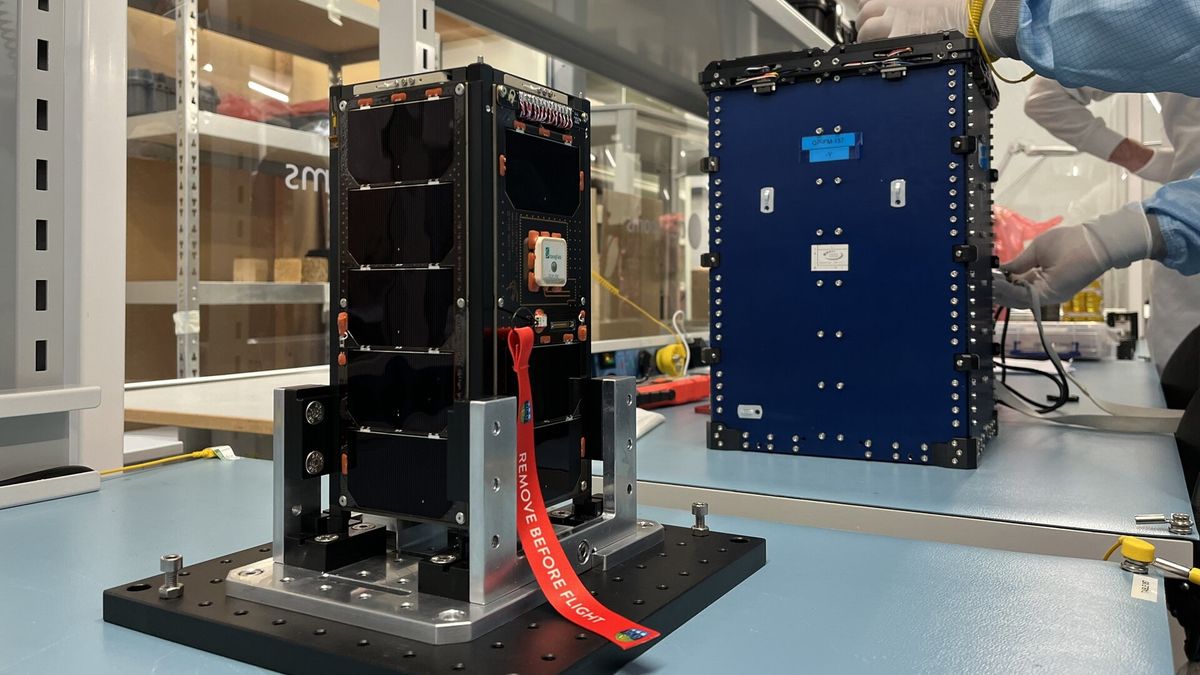
Ireland is all set to see its first-ever satellite reach orbit.
The Educational Irish Research Satellite 1, or EIRSAT-1, was built by University College Dublin students as part of the European Space Agency (ESA) Academy’s Fly Your Satellite! (FYS) program.
The gamma-ray astronomy cubesat project began in 2017 and is now due to fly on a SpaceX Falcon 9 rocket from Vandenberg Air Force Base in California at the end of November.
The two-unit cubesat carries three science payloads. The main payload is the Gamma-ray Module (GMOD), a detector that will study powerful gamma-ray bursts. The other two payloads will assess the performance of new protective oxide thermal coatings for satellites and test an alternative system for controlling spacecraft orientation called Wave Based Control.
Related: Cubesats: Tiny payloads, huge benefits for space research
EIRSAT-1 Launch Update!! 🚀 Ireland’s first satellite @EIRSAT1 is going to be launching towards the end of November! We will be posting updates here for the coming weeks so stay tuned 🥳😁#launch #cubesat #irelandsfirstsatellite pic.twitter.com/ESAOFFMYs2November 7, 2023
“University College Dublin has immense expertise in the domains of space science of astrophysics, and with EIRSAT-1 they overcame the challenges of a very complex engineering project,” Joost Vanreusel, head of the ESA Academy, said in an ESA statement.
“And that’s what made it a very appealing project for the Fly Your Satellite! educational programme: the combination of the scientific expertise at the university with ESA’s experience and expertise in the building and testing of small spacecraft,” Vanreusel added.
RELATED STORIES:
The FYS program has allowed the students to work with ESA experts during design and development, and it will also support the full life cycle of a space mission. ESA also worked closely with Irish authorities to overcome the unique regulatory challenges posed by a country launching its first satellite.
The project has helped Ireland establish its first spacecraft operations procedures, while University College Dublin now also has space infrastructure in the form of a cleanroom and a mission control.
EIRSAT-1 was initially supposed to launch on an Arianespace Vega C rocket, then switched to the first flight of the much-delayed Ariane 6. It will now fly as a rideshare payload on a Falcon 9 rocket in late November.
